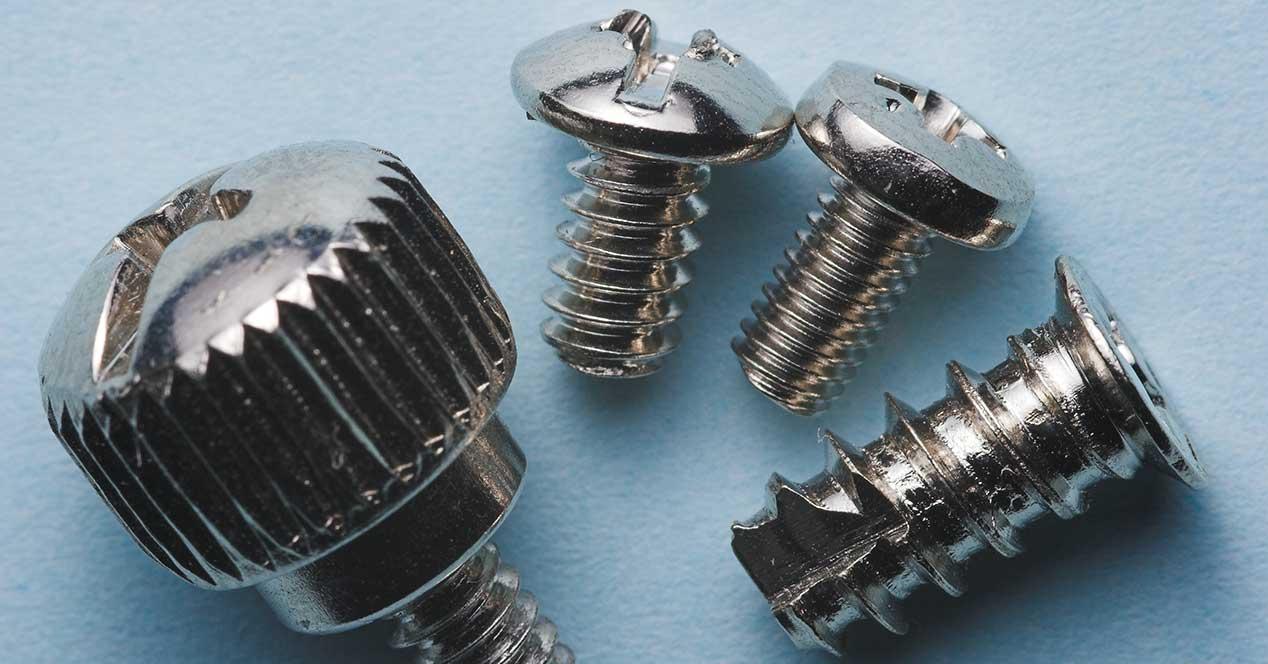There are no miraculous results, a stuck screw, for whatever reason, has only two solutions in a PC chassis: either it ends up coming out or we will have lost that thread forever. The problem with our industry is that in many cases the screws are plastic, usually ABS, so it will be very easy to destroy them.
Try these tips that can fix the problem
The tips we’re going to see range from some where you don’t have to spend a single dime, to ones where you have to leave a lot of money to take out this goddamn rebel. So, having said this and keeping this in mind, we have to understand that some of them cannot be done by the screw area, but maybe they can be done partially.
The most basic
Use the right screwdriver
It seems the most obvious thing in the world, but nothing could be further from the truth: most users have at most 3 screwdrivers for all types of screws. The problem is that depending on the screws, the head of the same has nothing to do with what we need, neither in dimensions nor in depth.
The first recommendation is to acquire once and for all a specific screwdriver kit, of the iFixit type with one of its kits, which range from 15 dollars to the most advanced of nearly 100 dollars.
If you don’t want to spend money, the ideal is not to use a star head for a star screw if it is too big for the screw head. Otherwise, it is better to use one with a smaller blade, and based on small strokes, try to force the screw to rotate. It will take time and the hits will need to be sharp, not very loud and precise, but it usually works if we have patience.
Elastic rubber
Another solution would be to use an elastic band like those used by letter carriers to group letters, since being made of a very flexible material if you insert it into the screw head and then use a screwdriver, the rubber will go into the slots and allow us to have more traction when it is not the perfect metric for the screw in question.
There is no more science, but you will have to be patient and use several pieces of rubber to remove the screw itself.
Olive oil
Another of the most basic tips and assuming we don’t have professional mineral oil on hand is to simply use a few drops of olive oil at the base of the screw to soak it into its threads. and make her move better when we try. Remove it with the screwdriver.
The most common
Multipurpose oils
There isn’t much to comment on here beyond well tested products like the WD40 or similar. The trick here is to place the screw perpendicular to the floor or the table, that is to say 90 degrees from the horizontal, apply the oil in the right amount and be very precise and above all, let it act a few hours for it to penetrate the holes.
It is more than likely that if we have the specific screwdriver, this method will be very useful, because we will be removing the screw effortlessly.
Softening oils with cold effect
It seems like a no-brainer, but the truth is that even in nylon screws, be it plastic wire or some other material, the reality is that combining a multipurpose oil with a cold effect release oil and a suitable screwdriver , is the perfect union so as not to damage the box or the product in question.
This type of oil comes out at a very cold temperature and you have to be careful where it is applied so as not to damage the other components, you have to be precise in its application, but they are extremely useful especially if the one of the two materials is metallic. Plus, they’re generally inexpensive, and one bottle is generous for several applications.
The most extreme
Pressure or impact screwdriver
This is a very curious screwdriver, because you have to hit it at the opposite end of the tip and with that, and thanks to its system, it multiplies the effect and force of the blow, turning it into a rotational force.
In other words, the harder we hit it, the more rotational force it produces. Logically, it is necessary to have the exact head at the head of the screw to exert the greatest possible force, and also, it is necessary to be very precise with the blow so that the screwdriver does not move.
The second problem is that it is not useful if the screw is not metallic, because with so much force we can easily pass the screw head, so it is a double edged sword.
Heat with a heat gun
This is a very aggressive and above all very delicate method, since it consists in heating the screw and the thread with a heat gun so that they expand a little. A powerful heat gun is not necessary, it can even be held in the hand, as it is hardly necessary to get between 60 and 70 degrees in both components.
The problem is that, logically, both have to be metallic, because otherwise what we will have will be a nice joint between the two because they will melt more or less.
Screw extractor
This is the last possible solution, since it involves a bit with its corresponding Dremel or drill. This involves taking a metal drill (if the screw is plastic) or high speed steel (if the screw is metal) with a diameter smaller than the screw and drilling it vertically to the end.
Then and once the hole is made, we must install a screw extractor, which must be very precise given the size of the hole, we will place it in the center of the screw and with a wrench or any tool that we can make turn the extractor to insert it into the screw.
Sometimes it is not necessary to drill the whole screw, just its mouth, but to extract it by turning it will need to be very careful.
Table of Contents













